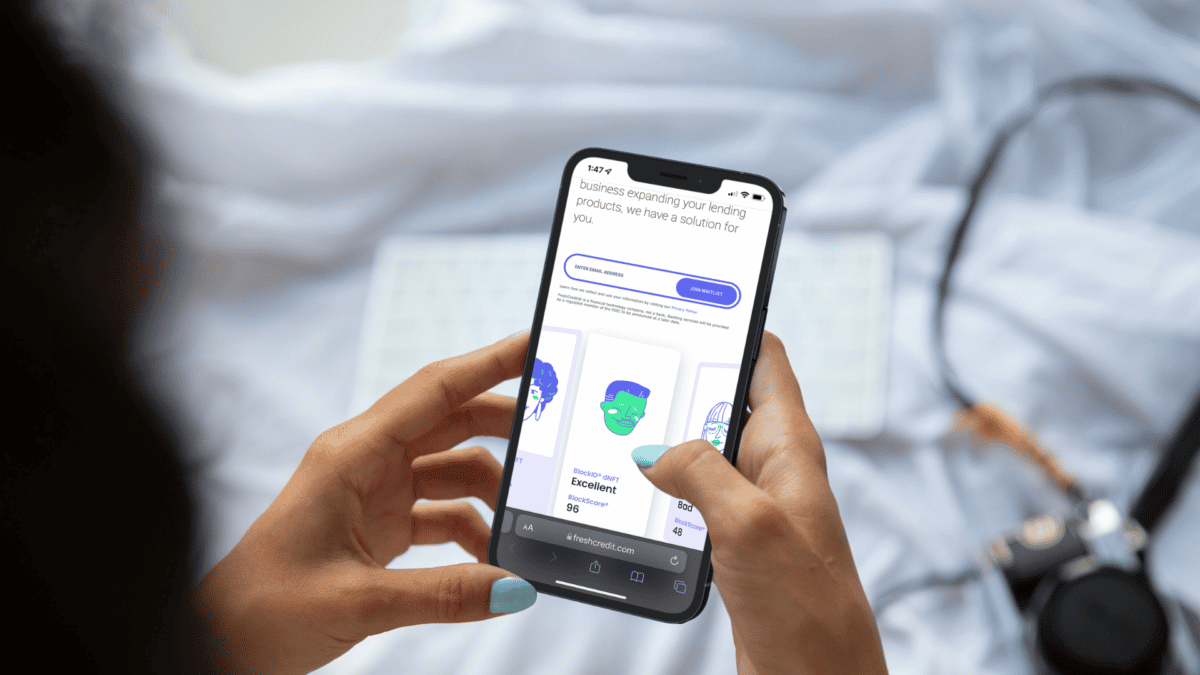It happens to all of us: situations occur where we need extra cash — whether it’s for a car repair or unexpected medical bill. Maybe you need $500 or $2,000 to cover a certain expense. Whatever the reason, you may be considering a bad credit loan as an avenue to get you the money you need quickly.
You’re not alone, either. Many people end up in situations where they have bad credit and limited options for covering unexpected situations. In fact, a recent survey revealed that 29 percent of American households have less than $1,000 in savings. With minimal savings, it’s tough to pay for unplanned bills or cover living expenses if you lose a job.
However, before you make the decision to apply for a bad credit loan, make sure you understand the risks and other options available. Some bad credit loans offer better terms than others, too. Our guide walks you through everything you need to know about bad credit loans and potential lenders.
What are bad credit loans?
Bad credit loans are personal loans offered to individuals with weak, poor or non-existent credit. The loans can be used for anything from medical bills and home repair to the purchase of a used car. A range of financial institutions provide bad credit loans — such as online lenders, credit unions and banks.
In general, bad credit loans tend to have higher interest rates and fees, along with less than desirable terms for the borrower. When you have a low credit score, lenders interpret this to mean you’re a high credit risk and more likely to default on a loan than someone with a good credit score. To offset this risk, lenders charge much higher interest rates. If you — or anyone else — declares bankruptcy or otherwise defaults on a loan, the lender has that additional money from the high interest rates to cover the loss.
Therefore, borrowers with good credit tend to be approved for loans with better interest rates and terms. Each lender has its own cutoff credit scores and criteria for loan approval and fees. Your credit score is an important measure of your financial health.
What is considered a bad credit score?
A bad credit score is generally considered anything below 560 on the FICO® scoring system. A low score might mean that you’ve failed to make payments on-time, maxed out your credit cards or have a negative incident like a foreclosure. Credit scores also consider public records such as bankruptcies and any state or federal tax liens.
To see where your credit score ranks, check out the FICO® ranges below. These ranges are estimates, as each credit bureau and financial institution has a slightly different definition of good and bad credit.
FICO® Score Ranges for Loans with Bad Credit
- Bad or Poor Credit: 559 and lower
- Fair Credit: 560–669
- Good Credit: 670–739
- Very Good Credit: 740–799
- Exceptional Credit: 800+
If you have a credit score in the 500s, for example, qualifying for some loans might be difficult or costly. Sometimes you can still be approved — even with a low score — because it depends on individual lender criteria.
Unsure of your credit score? You may be able to get a copy of your score through your bank or credit card — or a free online service. You can also purchase a credit score check from any of the three main credit bureaus: Experian, Equifax or TransUnion.
How can I get a loan with bad credit?
Having bad credit doesn’t mean you’ll always be turned down for a loan, but it can make it harder to be accepted by a lender. If you don’t have a stellar credit record, you might still get approved for a loan if you have a steady job, enough income or have collateral — like a car or motorcycle — for a secured loan.
While a bad credit loan might be a way for you to get the cash you need, bad credit loans often make your financial life more difficult — not better. Borrowers with bad credit pay extra fees and interest to make up for the fact that they’re less likely to pay off an entire loan. The extra fees are often very steep.
As an example, in the chart below, you can see the potential difference in fees based on credit status. For a 30-year mortgage of $250,000, someone with bad credit could end up paying $132,574 more in interest than someone with good credit.
Using a bad credit loan to cover the $250,000 mortgage, you could expect a monthly payment of over $1,500. If you had good credit, however, and were able to make the same $1,500 monthly payment, you could afford a $325,000 home with your mortgage payment.
Even if you can afford the payments on a bad credit loan, by settling for such a loan, you’re not only setting yourself up to lose significant cash, but you’re denying yourself the opportunity to purchase a larger home or nicer vehicle later on.
Borrowers using bad credit loans get charged substantially more — sometimes more than what’s required to cover the lender’s risk. The large additional amount could be why certain lenders eagerly accept borrowers with poor credit history.
Types of bad credit loans
Bad credit loans come in two main varieties: secured and unsecured.
Secured loans are granted to borrowers who own a valuable asset — generally referred to as collateral. Most secured loans use vehicles as collateral but other eligible assets include a house, boat or savings account. With a secured loan, if you’re unable to pay back the amount you borrowed, the lender is legally permitted to seize your asset. Secured bad credit loans typically have high fees and terms, but can offer larger cash amounts than unsecured loans. When deciding on a secured loan, keep in mind that the lender can assume possession of your asset if the loan is not repaid.
An unsecured loan is granted based on the borrower’s credit score and history, rather than collateral — meaning the loan doesn’t require an asset like a car or home to be approved, and the lender can’t seize an asset if the loan isn’t repaid. Unsecured loans are often harder for borrowers with bad credit to be approved for, but still are possible. Interest rates and terms depend on the lender, but are typically better than with secured loans.
Both secured and unsecured bad credit loans require completing a contract — if you receive approval. You’ll have to agree to the terms, rates and conditions of the loan. If you fail to repay your loan, the lender may sell your account to a collections agency and the negative mark will appear on your credit report. That’s why it’s important to be confident you can repay a loan, so it doesn’t negatively impact your credit history for years to come.
How to choose a loan company for bad credit
Being selective with your lender will save you plenty of headache — and money. Interest rates and repayment terms differ among lenders, so doing your homework is well worth your time. Be sure to watch for these main considerations when looking for a bad credit loan.
Review the interest rates and repayment terms.
What Annual Percentage Rates (APR) does the lender offer? How quickly do you have to repay the loan? What happens if you don’t repay the loan on time? Read through all of these details closely before signing a contract.
Opt for a personal loan instead of a payday or title loan.
Payday and title loans often have extremely high interest rates. These lenders make it more difficult and costly to make repayments than with other lenders. Personal loans, for example, usually have longer repayment schedules and lower interest rates.
Choose a lender who verifies your financial standing.
Any responsible lender will verify your information to confirm your ability to repay the loan. A predatory lender aims to catch you with a high-interest loan that you won’t be able to repay — giving them the upper hand to seize more money or your collateral.
A responsible lender will review details like your previous bank statements and proof of income. No matter the circumstance, though, a lender should always perform a soft credit check. If a lender doesn’t check your credit, they’re not interested in your ability to repay the loan — signaling that they’re a dangerous or predatory lender.
Fortunately, soft credit checks don’t impact your credit score. A hard credit inquiry, on the other hand, notifies the credit bureaus and can negatively affect your score — depending on how many inquiries you have in a certain time frame.
Find a trustworthy lender.
In addition to reviewing interest rates and terms, look for a loan company who’s reliable, trustworthy and abides by lending laws. If you can, read other borrowers’ reviews of the company to make sure they’re an honest lender.
Search for flexible repayment plans.
Some lenders will try to lock you into a short-term repayment schedule, which is often difficult to repay, especially if you don’t have a lot of extra cash on-hand. For example, payday lenders may only give you two weeks to pay back an entire loan. Instead, look for a 12- or 18-month repayment schedule. You’ll have more opportunities to make payments on time and the repayment amounts will often be smaller.
Ensure the lender reports payments to the credit bureaus.
If you make timely payments on your loan, it can improve your credit score over the long term. However, the lender needs to report your payments to the three main credit bureaus (Experian, Equifax and TransUnion) to make it count. Check with your potential lender to ensure they report on-time payments.
What Are the Risks of Getting a Bad Credit Loan?
Before agreeing to a bad credit loan, be sure you’re aware of the associated risks and costs.
First, a bad credit loan often comes with higher interest rates — meaning you’re paying back much more on a loan than someone with a good credit score. This extra cost can be quite steep. Depending on the size of your loan and interest rates, you could pay hundreds, thousands or tens of thousands more than a loan granted with a good credit score.
Second, if you choose an untrustworthy lender — like one who doesn’t check your credit score and ability to repay — you could be stuck with worse credit than when you started. Such lenders are considered predatory because they aim to trap you in a loan you won’t be able to repay. That’s why we strongly recommend choosing a lender who runs a soft credit check before any loan is approved. Like the saying goes, if the deal sounds too good to be true — like offering you cash without a credit check — it probably is.
Options Beyond a Bad Credit Loan
When considering a bad credit loan, many people feel stuck with their current credit score. If you’re in this situation, consider exploring your options. For example, is there a family member or friend who could lend you money while you work to repair your credit status? There are several ways to fix bad credit, most of which take a couple of months or more.
Many people find that a few months of proactively working to improve their credit is enough to help them qualify for loans at much lower interest rates. In some cases, the savings associated with the lower rates could mean the difference between being able to afford a modest $250,000 home versus a sprawling $400,000 property. The significant cost savings and ability to purchase a larger home or nicer vehicle make credit repair well worth your time.
Credit repair goes beyond working to improve your score: it’s about removing errors on your report that are negatively impacting your credit and should have never been on your report to begin with. In fact, the credit system is far from perfect and millions of Americans have credit scores that are not accurate assessments of their credit risk.
Fortunately, the law affords all Americans the right to dispute any items in their credit report that they feel may be inaccurate, untimely, misleading, incomplete, ambiguous, unverifiable, biased or unclear (“questionable”). Because negative credit entries have such a large impact on credit scores, by removing these listings, people have been able to leap from poor credit to credit scores of 700 and above.
FreshCredit® helps consumers legally dispute these questionable negative listings and has been able to help clients remove millions of negative items from their credit reports.
Fixing Your Credit
While a bad credit loan might seem like one of your only options for getting the cash you need, know that bad credit doesn’t have to be permanent. You can take steps to fix your credit and improve your score over time.
By taking positive actions such as removing errors on your report and paying on past due accounts, your credit score will begin to recover. Even with small improvements, you’ll be better qualified for loans — meaning your payments will be less and your terms will be better. By taking the right steps to repair your credit, you’ll be closer to financial stability and prosperity.


























